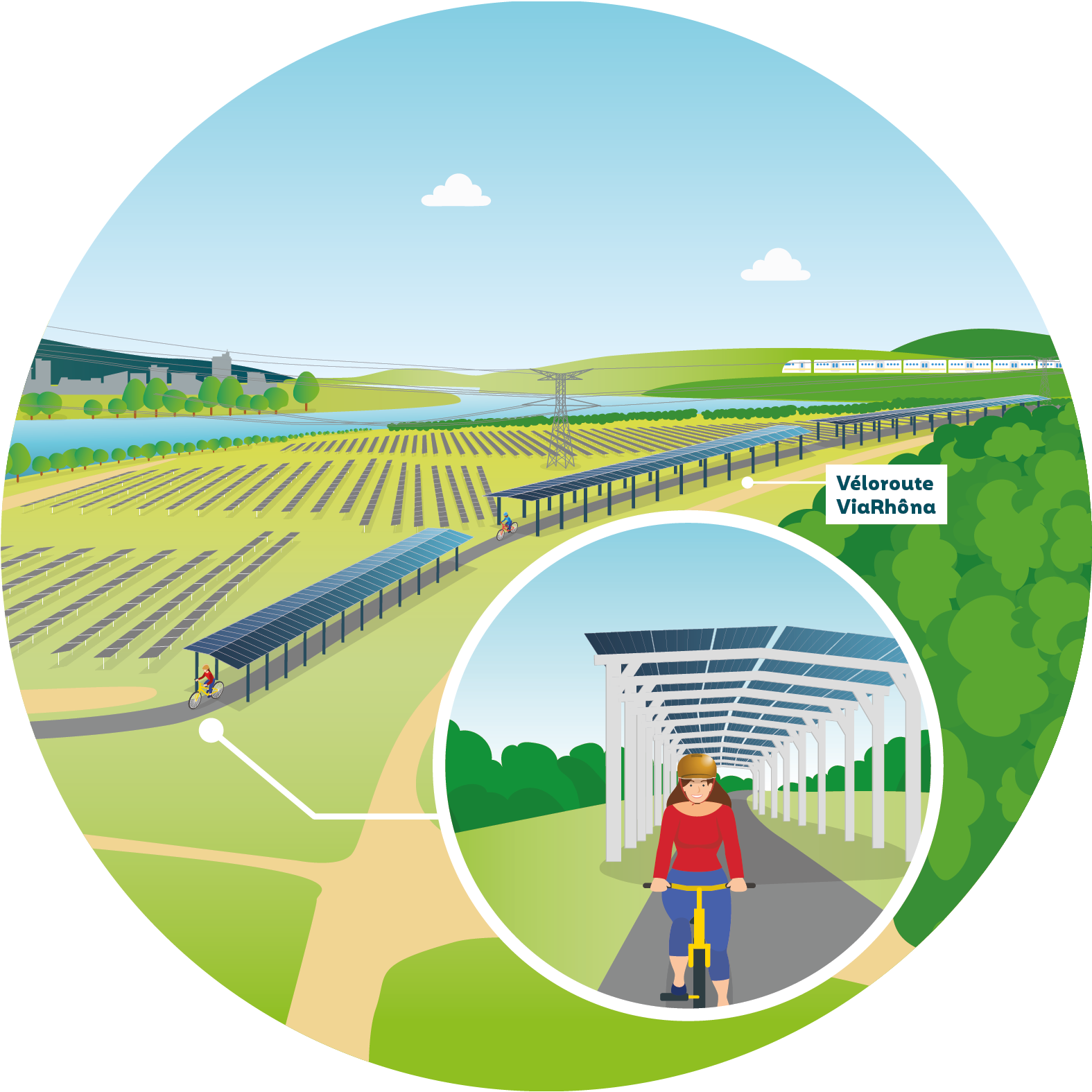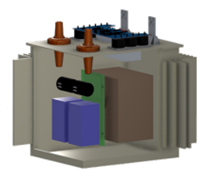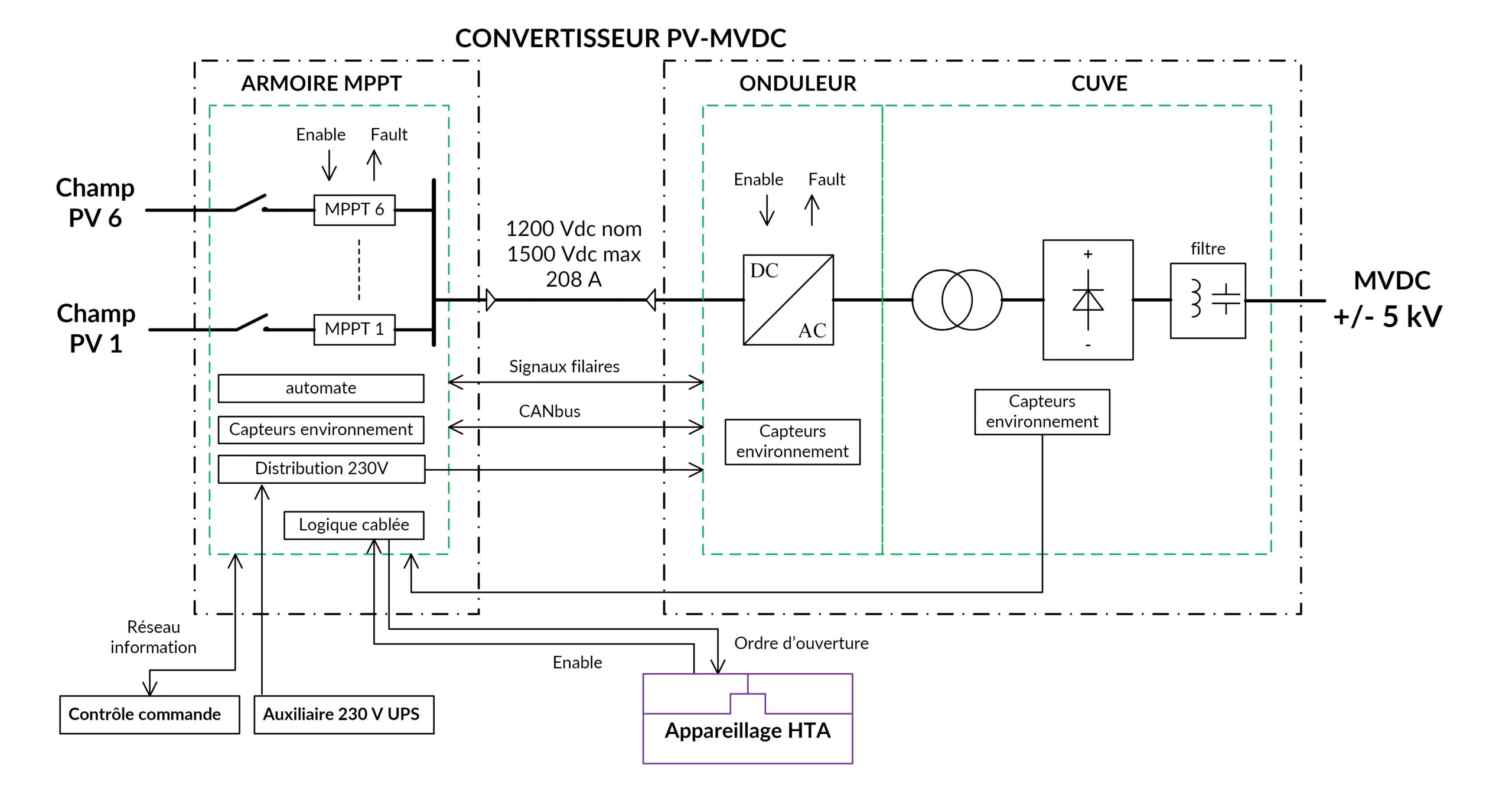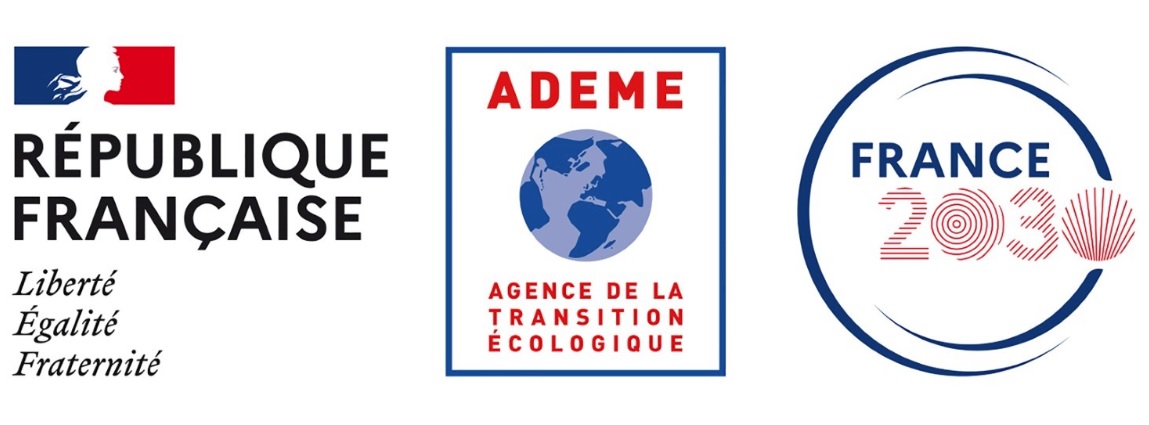SuperGrid Institute, a major partner
in the OPHELIA project
SuperGrid Institute is responsible for developing the DC (direct current) solid state transformer for the OPHELIA project, an innovative project funded by the French Environment and Energy Management Agency (ADEME), which aims to advance the linear photovoltaic sector through the development of a solar canopy demonstrator on the “ViaRhôna” cycle path. This is a real success story for SuperGrid Institute, allowing us to apply the results of several years’ research to a pre-industrial application, particularly in the field of innovative power conversion equipment.

© CNR
The news was announced at the end of August : CNR, Nexans, Schneider Electric, SNCF and SuperGrid Institute are to develop a linear PV park demonstrator, in the form of a solar canopy, with an innovative medium-voltage direct current (MVDC) electrical architecture. The demonstrator will be 900 metres long and will be installed along the “ViaRhôna” cycle path on the banks of the Rhône in the Vaucluse region (Caderousse sector). It will consist of a series of 30 solar canopy structures, each 6 metres wide and 5 metres high. The result will be an output of around 900 kWp, equivalent to the annual electricity consumption of around 700 people.
The aim of the OPHELIA project is to develop the linear photovoltaic sector to make the most of long, narrow plots of land. Construction and testing of the demonstrator are scheduled for 2025-2028.
SUPERGRID INSTITUTE, A KEY PROJECT PLAYER
Since its creation in 2014, SuperGrid Institute has established itself as a key player in the energy ecosystem. The company is now a trusted third party for manufacturers in the development of their products.
In this project, the Institute will be responsible for supplying DC solid state transformer for the demonstrator. All of our research departments in Villeurbanne will be involved in the project, which will enable us to put the results of our last ten years of research into industrial application.

Illustration of the future 20 kV DC solid state transformer @ SuperGrid Institute
“With this project, we are finally getting close to industrial production, even if it is still a prototype,” explains Dr Piotr Dworakowski, head of R&D in power electronics at SuperGrid Institute. “It’s a major challenge, but we have the necessary experience: we’ve been working on this DC-DC converter since the very beginning, improving it year after year, so that we now have a mature technology exactly when the market needs it.”
SuperGrid Institute has worked with a number of partners in the Auvergne-Rhône-Alpes Region (France) to develop the technologies for this converter. “We are able to put all these technologies together, do the required design, decide on their dimensions and make them work together.” SuperGrid Institute will be responsible for all the controls aspects of the converter, from the controls architecture to the coding. “We’re taking our expertise even further”. The project will also showcase our expertise in electrical networks (architecture, controls and protection) and power electronics (SiC semiconductor components, medium-frequency transformers, etc.).
At the same time, the company will be assisting the CNR with the project’s systems studies, Schneider Electric with the development of the switchgear and Nexans with the testing of cable technologies and accessories. This is a further vote of confidence from our partners in the project.
REAL TIME SIMULATIONS AND TESTING
The demonstrator will be tested by SuperGrid Institute using a digital twin. “We are going to develop digital twins on our real-time simulation platform to model the photovoltaic park’s installation in order to validate it and investigate everything to do with its controls,” Piotr Dworakowski continues.
This method will enable us to analyse whether all the equipment’s controls systems are working well together. Once the demonstrator has been installed, this technique will enable us to reproduce various operation scenarios of the photovoltaic park to monitor its behaviour and analyse any problems. “We will be able to provide appropriate solutions in the field, after simulation tests.” This makes the commissioning and operation of the demonstrator much simpler.
SOME INTERESTING PERSPECTIVES
“With very high energy efficiency (around 99%), the power converter we are developing also significantly reduces the size and weight of the equipment and therefore the consumption of raw materials (copper, iron),” concludes Dr Piotr Dworakowski. At the end of the project, this technology could also be used in other markets, such as electric vehicle recharging or hydrogen production.

Block diagram of the DC solid state transformer © SuperGrid Institute
Representing an investment of more than €20 million, the OPHELIA project is funded by the French government as part of the France 2030 plan, operated by ADEME, and has been accredited by the Tenerrdis and I-Trans competitiveness clusters.



